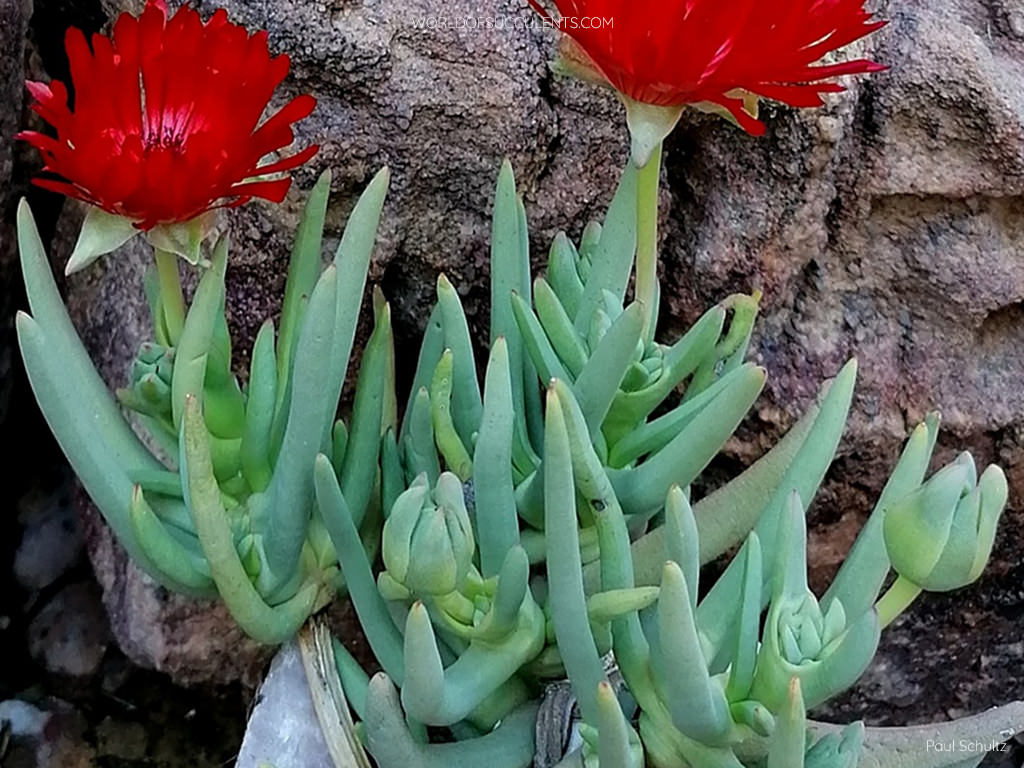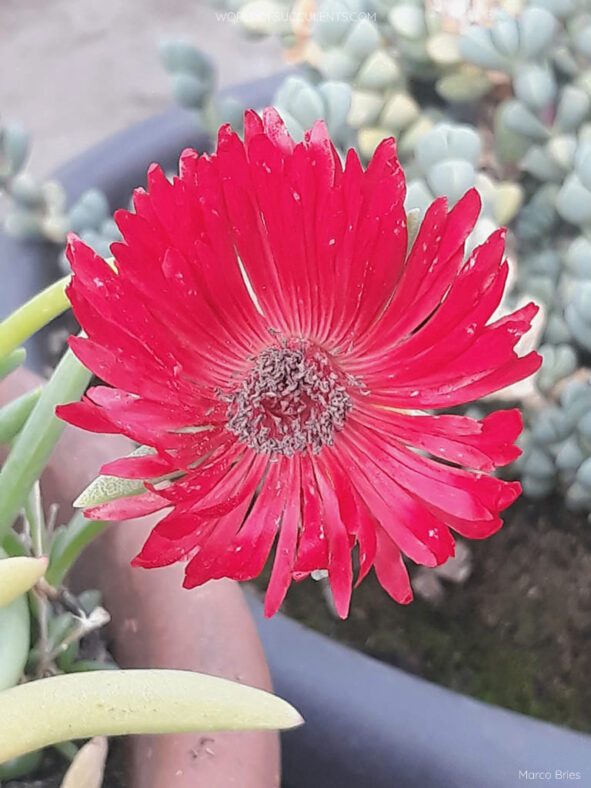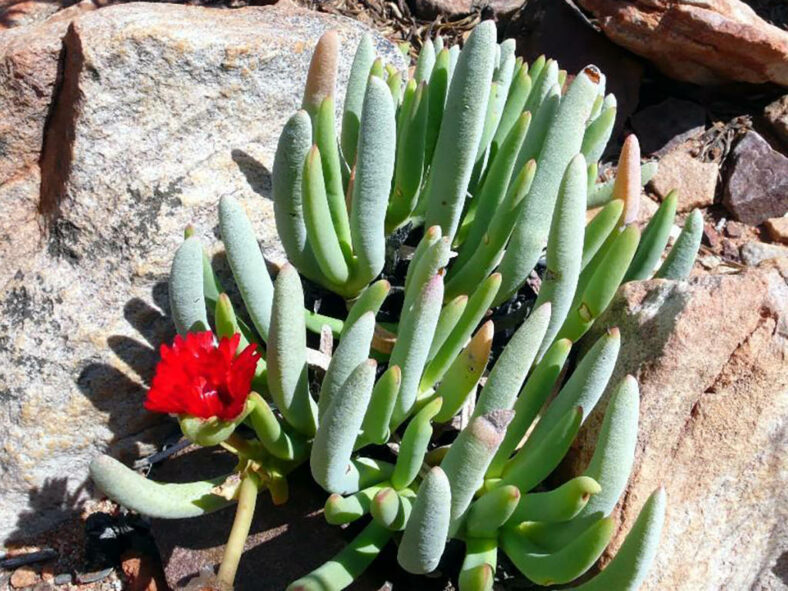Cephalophyllum alstonii is a creeping succulent with spectacular flowers. It is excellent as a ground cover and a potted plant on a patio.
Scientific Name
Cephalophyllum alstonii Marloth ex L.Bolus
Common Name(s)
Red Spike Ice Plant
Synonym(s)
Cephalophyllum franciscii, Mesembryanthemum alstonii
Scientific Classification
Family: Aizoaceae
Subfamily: Ruschioideae
Tribe: Ruschieae
Genus: Cephalophyllum
Etymology
The specific epithet "alstonii" (pronounced al-STON-ee-eye) honors Edward Garwood Alston (1862-1934), a farm manager and plant collector in the Northern Cape province of South Africa who sent plants to Peter MacOwan and Selmar Schönland.
Origin
Cephalophyllum alstonii is native to South Africa. It grows on dry sandstone slopes in the Western Cape province.
Description
Cephalophyllum alstonii is a beautiful succulent with creeping stems that bear erect, greyish leaves, forming dense clumps. The stems can grow up to 20 inches (50 cm) long and form roots where their nodes touch the soil. The fleshy leaves are triangular in cross-section, rounded at the base, and can measure up to 4.8 inches (12 cm) long.
During the winter, Cephalophyllum alstonii produces attractive, bright red-magenta flowers with reddish-brown stamens. The flowers open only in bright sunlight and stay closed at night or on cloudy days. They can reach up to 0.4 inches (1 cm) in diameter. Once pollinated, the flowers turn into 18- to 20-locular capsules with persistent stalks and tiny brown seeds.

How to Grow and Care for Cephalophyllum alstonii
Light: This succulent requires bright light but not too much direct sunlight. So, a windowsill that receives 4 to 5 hours of direct sunlight in the morning and partial shade in the afternoon will be a perfect spot for indoor growing.
Soil: Cephalophyllum alstonii thrives in porous soil, allowing the water to drain away quickly. Therefore, use commercial soil for succulents or make your own well-draining mix.
Temperature: High temperatures are not a problem as long as there is plenty of fresh air, but this plant is not cold-hardy. It grows best in USDA Plant Hardiness Zones 9b to 11b, with average minimum winter temperatures ranging from 25 to 50 °F (-3.9 to 10 °C).
Watering: To keep your plant healthy, it is essential to know when, how much, and how often to water. During its dormant period, usually in summer, Cephalophyllum alstonii requires little or no water. Once it grows again in the fall, water thoroughly but allow the soil to dry between waterings.
Fertilizing: As long as you repot this plant every two years, it does not need fertilizer.
Repotting: Even if your plant can stay happy in the same pot for years, you can repot it occasionally to give it more space during the growing season. However, the best time is at the beginning of the season.
Propagation: Although Cephalophyllum alstonii is usually started from seeds, it can also be easily propagated by division. Late summer, just before it begins to break dormancy, is the best time to divide the plant, while fall is ideal for sowing the seeds.
Learn more at How to Grow and Care for Mesembs.
Toxicity of Cephalophyllum alstonii
Cephalophyllum alstonii is considered non-toxic, so having it around kids and pets is safe.
Links
- Back to genus Cephalophyllum
- Succupedia: Browse succulents by Scientific Name, Common Name, Genus, Family, USDA Hardiness Zone, Origin, or cacti by Genus
Photo Gallery
Click on a photo to see a larger version.


